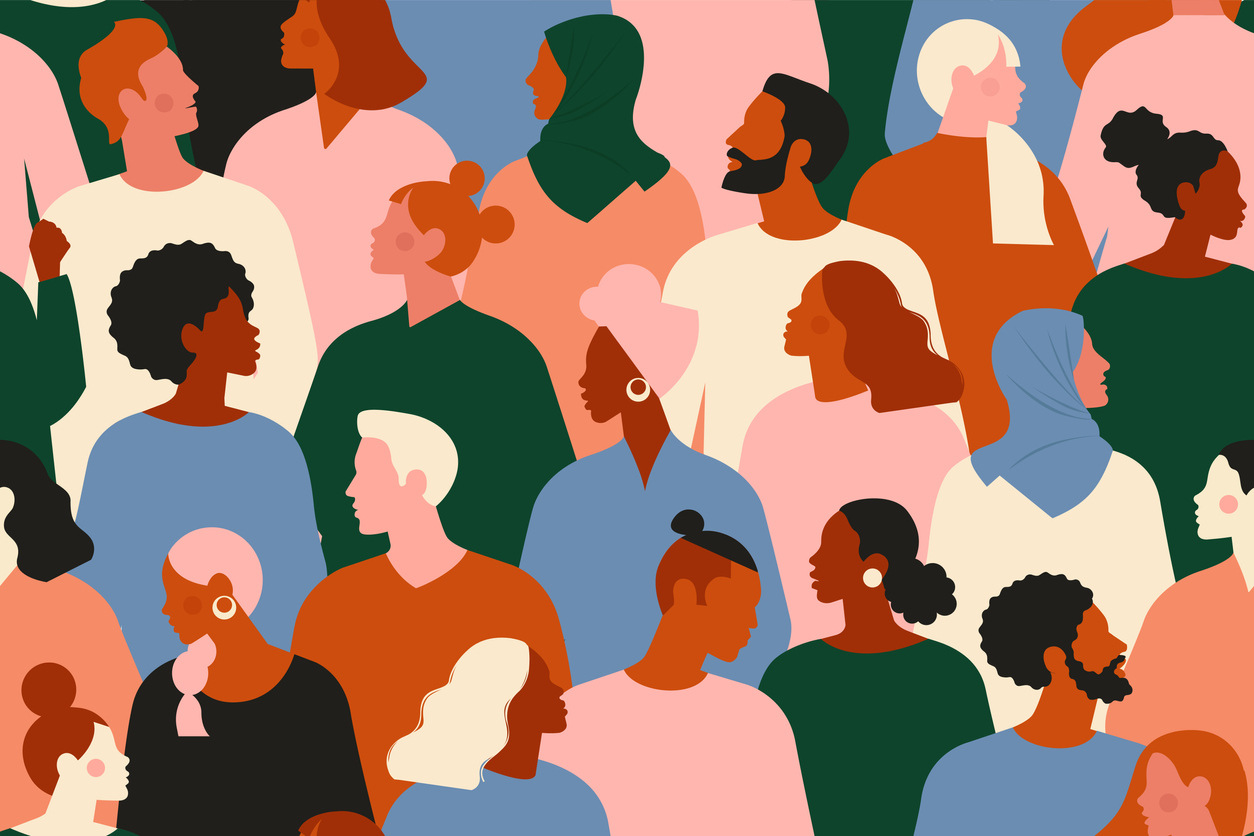Access to the web is a basic human right. (1)
In fact, the person credited with inventing the world wide web as we know it, Tim Berners-Lee, believes that the power of the internet lies in its universality: its ability (at least in theory) to be accessed by anyone, anywhere, at any time. And if the power of the web is linked inextricably with accessibility, it follows that the people who build digital products would want those products to be usable, and valuable, to as many people as possible.
The stark reality is, however, that the web - at it’s very core - is universally accessible; it’s our designs that aren’t. With that in mind, there are several ways to work toward ensuring that an agile team does promote inclusivity in visual, technical, and test design, and it begins by understanding exactly what inclusive design does, and what it doesn’t do.
Inclusive Design Improves The User Experience for Everyone.
There’s a tendency to approach inclusive design with a mindset singularly focused on improving ease of use for a specific disability. This isn’t exclusively a digital product problem: for decades before the internet was even invented, products designed for accessibility were engineered with just disability in mind.
When disabled parking bays were introduced, they were intended to improve accessibility for people with permanent disabilities, like lifelong wheelchair users. Over time, formal permission to use those same bays was extended to people with ‘temporary’ or ‘situational’ disabilities, such as broken limbs or expectant mothers.

Similarly, when it comes to creating digital products, solving an issue for a person with a permanent disability, like a missing limb, usually ends up solving problems for people who have similar, if not permanent, mobility issues. Designing an app that’s easier to use for someone who has lost an arm also helps someone with a broken arm, or someone who is carrying a child, or even groceries.
"In fact, it's often, if not almost always the case, that designing more inclusive, more accessible products isn't just something that doesn't impede a non-disabled person's use of as product, it's something that enhances user experience across the board."
Perhaps one of the most valuable lessons to learn from this premise: solve for one, extend to many, is that the design solutions engineered to address a permanent disability for a specific group of people, often go completely unnoticed by users without any disability at all.
Pairs of shampoo and conditioner bottles are designed, almost universally, to have caps on opposite ends: this helps blind or vision-impaired consumers differentiate between two very similar bottles easily and efficiently. But that design element - which is so fundamentally critical to the ability of a blind or vision-impaired person to wash themselves - is a design element that will also go completely unnoticed by someone who does have perfect vision. Said otherwise: solving a problem for one group of people through inclusive design does help that one group of people to use a product. At the same time, it doesn’t cause usability issues for anyone else.
In fact, it’s often, if not almost always the case, that designing more inclusive, more accessible products isn’t just something that doesn’t impede a non-disabled person’s use of a product, it’s something that enhances user experience across the board.
Inclusive Design Is Good For Business.
In the UK alone, the spending power of disabled households, a household within which at least one person has a permanent disability, is a staggering £274B. Further, three out of four families in the UK have walked away from a UK business or product due to accessibility-related issues.
Creating something that’s entirely unusable by a whole group of potential consumers is, at best, negligent, and it’s certainly bad for business. At worst, creating an inaccessible product deliberately excludes certain groups from using a product, and this doesn’t just apply to persons with permanent physical disabilities.
When it comes to creating inclusive products - touch, sight, and sound aren’t the only barriers to use. Language, culture, age, and socioeconomic status are all major considerations for designing a product and an experience that’s not just useful, but comfortable. After all, the goal of user-centered design isn’t just to create something that simply works, but to create something valuable, and enjoyable.
Unnecessarily gendered language, patently offensive terminology, ignorance of cultural idiosyncrasies, and/or creating products that are exclusively compatible with higher-end devices can make a digital experience unbearable for a host of potential users, ultimately resulting in more limited dissemination and use of your product in the marketplace.

Inclusive Design Best Practices.
As should be the case for the design of any product intended for use by a range of consumers, designing a digital product must take accessibility and inclusiveness into account from Day One.
All agile team members involved in the creation of a digital asset should be tasked with thinking about these issues and trained to raise them early, and often. Designers, Project Managers and Engineers should all work with an eye toward creating a product that will be most usable, by most people, in most places. To do less is to not only undermine the future success of your product, but to undermine your team’s capacity for creating truly user-centered designs.
One crucial, highly effective way to promote empathy throughout your team, is to incorporate diverse, inclusive personas into your testing charter, and refer back to them frequently. Inclusive design is about the person, not the disability, and creating personas with values and goals and attitudes and behaviours that exist outside of physical, cognitive, or social limitations is the best method available for humanising design and testing processes. Frequent callbacks to those personas are necessary, as designers and engineers without these limitations may not automatically embed the appropriate or relevant elements necessary for an enjoyable user experience among a certain group of people.
"Inclusive design is about the person, not the disability, and creating personas with values and goals and attitudes and behaviours that exist outside of physical, cognitive, or social limitations is the best method available for humanising design and testing processes."
Inclusive Design Requires Inclusive Teams.
Creating an inclusive digital product starts with creating an inclusive team. From sourcing diverse talent with unique skills, experience, abilities and backgrounds, to training teams on inclusive design principles, inclusive design is as much about the people creating the product as it is about the product itself.
Inclusive teams are better equipped to create inclusive products because of their capacity to approach design in a proactive way. Instead of reacting to user experience challenges as the product is being built, they’re able to consider elements of inclusivity and accessibility early on in the process, and bake them into the entire project right from the beginning. This increased efficiency saves time and money, and it helps teams get a product right.
Inclusive teams also best promote empowerment and universal accessibility, and that’s a human right.
(1) United Nations Convention on the Rights of Persons With Disabilities.
